Abstract: This article summarizes the status quo and development of building materials packaging materials, and proposes the possibility of using degradable plastics in building materials packaging, and looks forward to the development trend.
1 Development process of building materials packaging China's packaging industry started late. It was not until the 1980s that after the reform and opening up, the packaging industry received much attention. At that time, the packaging of building materials was still at an early stage of development. Cement packaging has been used in paper bags that have been consistently manufactured for decades. Paper quality is poor, and recycled paper is heavily contaminated. The cement bags are easily damaged during the handling process, and the cement spills are serious. This not only causes huge economic losses, but also causes serious pollution. surroundings. The flat glass also uses a traditional single-grate wooden box packaging form. Straw liners are used for manual loading and unloading. It is also easy to cause collision damage. With the continuous development of the country's construction, the output of cement has been increasing year by year, and the supply of paper has been limited. Once there was a situation where building materials were extremely lacking in packaging materials. The "heavy product, light packaging" concept that has been formed over the years has seriously hampered the development of the building materials industry.
In response to these problems, the relevant state agencies reviewed the situation and formulated the guidelines for “Flourishing Flowers, Keeping Good Together, and Keeping the Goodâ€. China's building materials and packaging materials began to enter a stage of rapid development. In order to solve the problem of shortage of cement packaging paper, plastic woven bag packaging materials and composite packaging materials emerged. Polyethylene and polypropylene materials were used to ease supply conflicts. For glass packaging, steel containers were used in a timely manner and shipped in containers to effectively solve the problem of lack of wood packaging. The state also revised the national standards for "cement paper bags" and formulated the new national standards for "glass container racks." It standardized the manufacture and production of building materials and packaging materials, and the special machinery and equipment that it was supporting also gradually shaped and began specialized production.
The early plastic woven bags and composite bags were unreasonable in design, coupled with insufficient experience, and there were certain quality problems. After a period of trials and trials, some difficult-to-recycle composite bags were removed and laminated woven bags were used. The paper bag was abolished by three plus one bag type and was incorporated into the revised national standard for cement bags. Glass containers have also gradually evolved from A-frames and L-frames to more advanced package-type, rail-type, etc. Glass wooden packaging has also evolved from old-fashioned wooden lattice boxes to modular wooden boxes and new-style lattice wooden boxes.
Nowadays, the development of building materials packaging materials has entered a stage of steady development and various packaging forms have emerged. There are three types of cement bags on the market today: paper bags, laminated plastic woven bags and various composite bags. Paper bag type includes four-layer paper bag paper, three-layer extension paper, sewing paper, paste paper and other different types; laminated plastic woven bag with inner village paper, no inner liner paper, etc.; all kinds of composite bag type have paper and plastic Composite bags, prestressed composite bags, water soluble yarn composite bags and many other. In the glass packaging equipment, wooden boxes have a new style wooden box, modular wooden box; container rack has A type, L type, closed type, W type, package type, rail type and modular type.
2 Development trend of building materials packaging - How green packaging protects the environment and promotes and safeguards the sustainable development of the social economy is an issue that China urgently needs to solve. To meet the needs of environmental protection, China's building materials packaging only take the road of green packaging, in order to comply with the trend and healthy development. The so-called green packaging refers to packaging materials that do not cause pollution to the ecological environment, do no harm to human health, and can be recycled and recycled.
In fact, the current packaging of building materials is undoubtedly a key category that should focus on preventing and controlling pollution. Taking cement packaging as an example, the output of cement in China has reached more than 500 million tons. In addition to bulk cement, bags of cement require about 8 billion bags a year. These packaging bags are all disposable products. The total amount of waste is 1.6 billion tons. Imagine if these waste packaging bags cannot be recycled and the degree of pollution to the environment can be imagined. Although more than two-thirds of the bags are recyclable, the number of waste bags that cannot be recycled or reused is still considerable. As for the dust pollution generated during the packaging process of cement, the air pollution caused by the spillage during the circulation is still very serious. In view of this situation, in the forthcoming revision of the "Cement Bag" national standards, we should resolutely abolish those bags that cannot be recycled, and promote green packaging.
At present, the green packaging of construction materials has made great progress in technology and equipment. For example, from the traditional multi-layer paper bag to the extension paper paste bottom bag, it has reduced packaging and saved forest resources. Many companies have introduced mature products. For example, the Vylon water-soluble yarn composite bag developed by Lanzhou Jinan New Technology Co., Ltd. has the characteristics of being able to dissolve in a certain temperature and hot water before the acetalization treatment of vinylon fiber, so that the waste bag paper fiber is separated and recycled separately. purpose. In addition, the new type of packaging material is mainly used as the main raw material for waste paper, and uses the hydrogen bonding affinity chemistry of pulp fiber itself. Without any binder, the upper and lower pulps are combined on the paper machine with the web, which is very good. Alkalinity, air permeability, heat resistance, moisture resistance and easy filling, and low cost, no pulping in the production process, no acid and alkali waste discharge, has a very good prospect for development.
Although the green packaging started soon, but with the continuous development of environmental protection technology, degradation has become easy to be destroyed by the environment of the debris or broken, and further degradation over time to become completely environmentally friendly material, and ultimately return to nature. It has the following features:
(1) Usability: Has similar or similar application performance to ordinary plastics of the same type;
(2) Degradability: After the function is completed, it can be degraded quickly under natural environmental conditions and become fragments or fragments that are easily digested by the environment and eventually return to nature;
(3) Safety: Residues produced and degraded in the degradation process are harmless to the natural environment or have no potential hazards;
(4) Economical: The price is equal to or slightly higher than that of ordinary plastics of the same type.
4 Problems that can be solved by biodegradable plastics (1) Controllability of degradation time: The newly implemented National Cement Standard strictly regulates the use time of cement. Therefore, the biodegradable plastic must be used in formula design and production. The control of degradation time under various application conditions was studied to meet the actual needs of cement and other products.
(2) Performance: Degradable plastics used to produce plastic bags ... (Deputy Secretary-General of China Building Materials Technology Association, Construction Materials Committee, Huang Jianguo)
1 Development process of building materials packaging China's packaging industry started late. It was not until the 1980s that after the reform and opening up, the packaging industry received much attention. At that time, the packaging of building materials was still at an early stage of development. Cement packaging has been used in paper bags that have been consistently manufactured for decades. Paper quality is poor, and recycled paper is heavily contaminated. The cement bags are easily damaged during the handling process, and the cement spills are serious. This not only causes huge economic losses, but also causes serious pollution. surroundings. The flat glass also uses a traditional single-grate wooden box packaging form. Straw liners are used for manual loading and unloading. It is also easy to cause collision damage. With the continuous development of the country's construction, the output of cement has been increasing year by year, and the supply of paper has been limited. Once there was a situation where building materials were extremely lacking in packaging materials. The "heavy product, light packaging" concept that has been formed over the years has seriously hampered the development of the building materials industry.
In response to these problems, the relevant state agencies reviewed the situation and formulated the guidelines for “Flourishing Flowers, Keeping Good Together, and Keeping the Goodâ€. China's building materials and packaging materials began to enter a stage of rapid development. In order to solve the problem of shortage of cement packaging paper, plastic woven bag packaging materials and composite packaging materials emerged. Polyethylene and polypropylene materials were used to ease supply conflicts. For glass packaging, steel containers were used in a timely manner and shipped in containers to effectively solve the problem of lack of wood packaging. The state also revised the national standards for "cement paper bags" and formulated the new national standards for "glass container racks." It standardized the manufacture and production of building materials and packaging materials, and the special machinery and equipment that it was supporting also gradually shaped and began specialized production.
The early plastic woven bags and composite bags were unreasonable in design, coupled with insufficient experience, and there were certain quality problems. After a period of trials and trials, some difficult-to-recycle composite bags were removed and laminated woven bags were used. The paper bag was abolished by three plus one bag type and was incorporated into the revised national standard for cement bags. Glass containers have also gradually evolved from A-frames and L-frames to more advanced package-type, rail-type, etc. Glass wooden packaging has also evolved from old-fashioned wooden lattice boxes to modular wooden boxes and new-style lattice wooden boxes.
Nowadays, the development of building materials packaging materials has entered a stage of steady development and various packaging forms have emerged. There are three types of cement bags on the market today: paper bags, laminated plastic woven bags and various composite bags. Paper bag type includes four-layer paper bag paper, three-layer extension paper, sewing paper, paste paper and other different types; laminated plastic woven bag with inner village paper, no inner liner paper, etc.; all kinds of composite bag type have paper and plastic Composite bags, prestressed composite bags, water soluble yarn composite bags and many other. In the glass packaging equipment, wooden boxes have a new style wooden box, modular wooden box; container rack has A type, L type, closed type, W type, package type, rail type and modular type.
2 Development trend of building materials packaging - How green packaging protects the environment and promotes and safeguards the sustainable development of the social economy is an issue that China urgently needs to solve. To meet the needs of environmental protection, China's building materials packaging only take the road of green packaging, in order to comply with the trend and healthy development. The so-called green packaging refers to packaging materials that do not cause pollution to the ecological environment, do no harm to human health, and can be recycled and recycled.
In fact, the current packaging of building materials is undoubtedly a key category that should focus on preventing and controlling pollution. Taking cement packaging as an example, the output of cement in China has reached more than 500 million tons. In addition to bulk cement, bags of cement require about 8 billion bags a year. These packaging bags are all disposable products. The total amount of waste is 1.6 billion tons. Imagine if these waste packaging bags cannot be recycled and the degree of pollution to the environment can be imagined. Although more than two-thirds of the bags are recyclable, the number of waste bags that cannot be recycled or reused is still considerable. As for the dust pollution generated during the packaging process of cement, the air pollution caused by the spillage during the circulation is still very serious. In view of this situation, in the forthcoming revision of the "Cement Bag" national standards, we should resolutely abolish those bags that cannot be recycled, and promote green packaging.
At present, the green packaging of construction materials has made great progress in technology and equipment. For example, from the traditional multi-layer paper bag to the extension paper paste bottom bag, it has reduced packaging and saved forest resources. Many companies have introduced mature products. For example, the Vylon water-soluble yarn composite bag developed by Lanzhou Jinan New Technology Co., Ltd. has the characteristics of being able to dissolve in a certain temperature and hot water before the acetalization treatment of vinylon fiber, so that the waste bag paper fiber is separated and recycled separately. purpose. In addition, the new type of packaging material is mainly used as the main raw material for waste paper, and uses the hydrogen bonding affinity chemistry of pulp fiber itself. Without any binder, the upper and lower pulps are combined on the paper machine with the web, which is very good. Alkalinity, air permeability, heat resistance, moisture resistance and easy filling, and low cost, no pulping in the production process, no acid and alkali waste discharge, has a very good prospect for development.
Although the green packaging started soon, but with the continuous development of environmental protection technology, degradation has become easy to be destroyed by the environment of the debris or broken, and further degradation over time to become completely environmentally friendly material, and ultimately return to nature. It has the following features:
(1) Usability: Has similar or similar application performance to ordinary plastics of the same type;
(2) Degradability: After the function is completed, it can be degraded quickly under natural environmental conditions and become fragments or fragments that are easily digested by the environment and eventually return to nature;
(3) Safety: Residues produced and degraded in the degradation process are harmless to the natural environment or have no potential hazards;
(4) Economical: The price is equal to or slightly higher than that of ordinary plastics of the same type.
4 Problems that can be solved by biodegradable plastics (1) Controllability of degradation time: The newly implemented National Cement Standard strictly regulates the use time of cement. Therefore, the biodegradable plastic must be used in formula design and production. The control of degradation time under various application conditions was studied to meet the actual needs of cement and other products.
(2) Performance: Degradable plastics used to produce plastic bags ... (Deputy Secretary-General of China Building Materials Technology Association, Construction Materials Committee, Huang Jianguo)
| Measurements (m) | can be customized |
| Certificate |
CE,ASTM,ISO14001, ISO18000, ISO9001 Certificate,
and GS certificate from TUV Company of Germany.
|
| Color | Be customized |
| Materials |
a.Jumping Mat: Imported from United States
b.Foam Pad:EPE, waterproof closed-cell foam, mildew protection, uneasy to lose shape
c.Pad:PVC(500D,500D) fabric
d.Springs:Galvanized steel with good elastic performance
(Different material is available according to your needs)
|
| Advantage |
a.Anti-UV
b.Anti-static
c.Security
d.Environmental protection e.Uneasy to lose shape |
| Function |
1.Can protect children safe when they playing indoor, and let they enjoy the play freely 2.Suitable for improving Children energy and imagination 3.Helping them grow up happily, cleverly, and healthily |
| Installation | Professional CAD instruction, assembly procedure and project case . |
| Age Range | Children and adults |
| Apply to | Amusement park, gymnasium, Kindergarten, Preschool, etc. |
| Packing | Standard export packing |
| Warranty Period | 2 years on mats |
| Remark |
We can design and produce as your requirements |
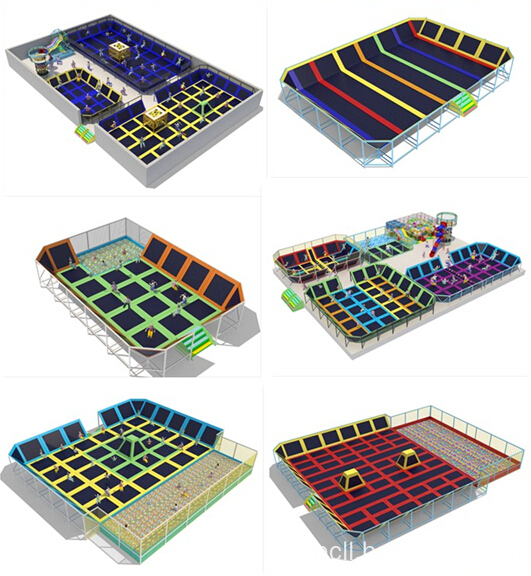
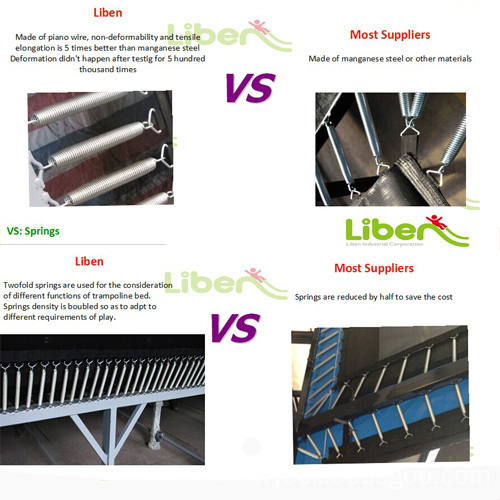
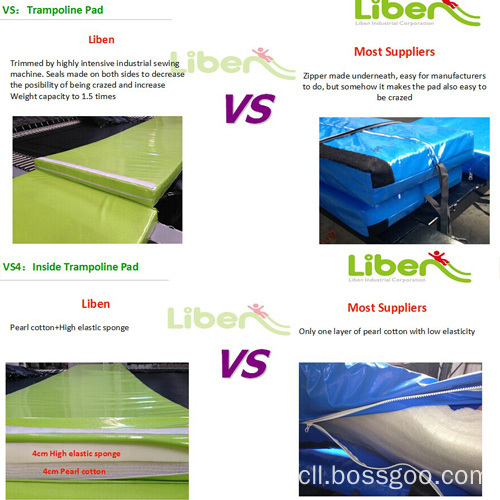

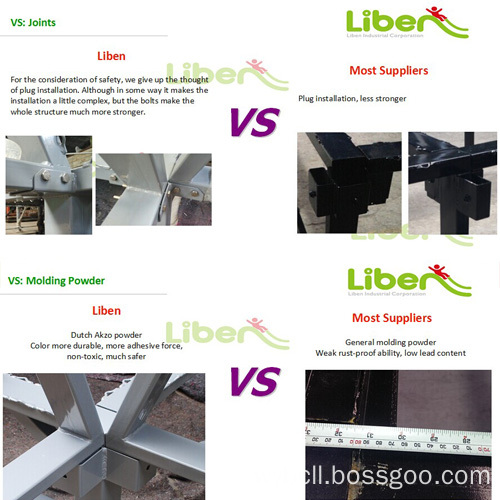
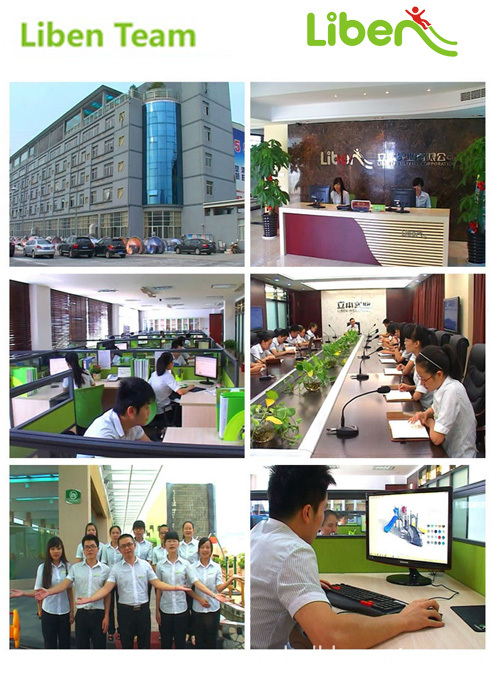
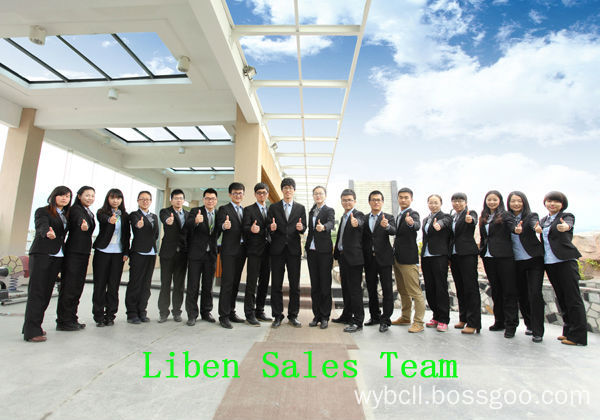
Spider-Man Tower, Children Spider-Man Tower Trampoline, Multilayer Spider-Man Tower Trampoline, Spider-Man Tower Trampoline
Liben Group Corporation , http://www.trampolinearea.com
